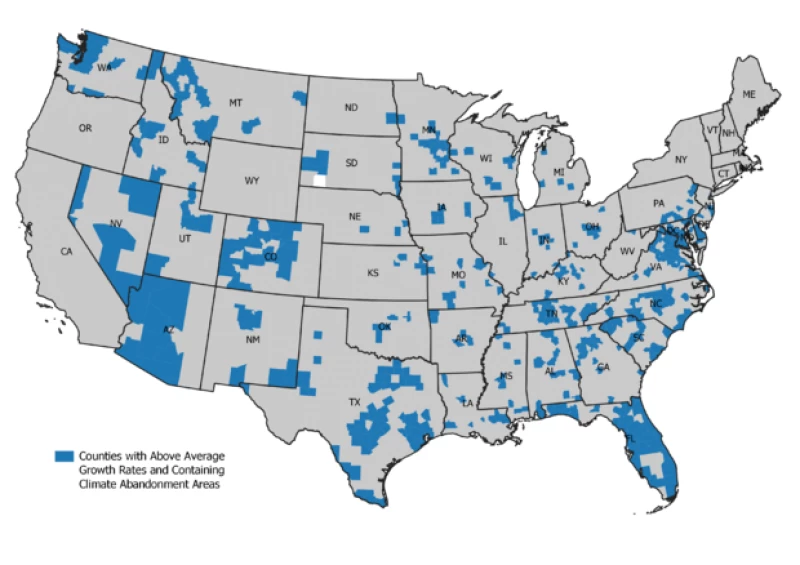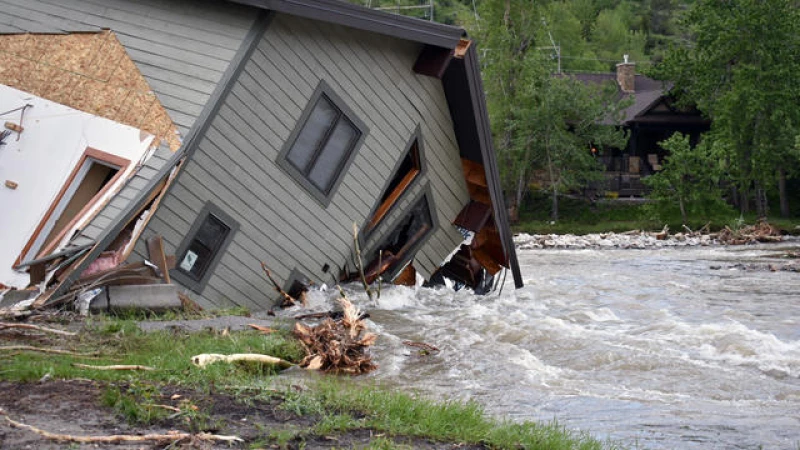Climate Change Forces Americans to Relocate
Climate change is already forcing millions of people around the world to leave their homes to seek refuge from the rising seas, devastating droughts and the other effects of global warming. But that migration is also happening within the U.S. as extreme weather makes parts of the country virtually inhospitable, according to a new analysis.
About 3.2 million Americans have moved due to the mounting risk of flooding, the First Street Foundation said in a report that focuses on so-called "climate abandonment areas," or locations where the local population fell between 2000 and 2020 because of risks linked to climate change.
Many of those areas are in parts of the country that also have seen a surge of migration during the past two decades, including Sun Belt states such as Florida and Texas. Such communities risk an economic downward spiral as population loss causes a decline in property values and local services, the group found.
"There appears to be clear winners and losers in regard to the impact of flood risk on neighborhood level population change," Jeremy Porter, head of climate implications research at the First Street Foundation, said in a statement.
He added, "The downstream implications of this are massive and impact property values, neighborhood composition, and commercial viability both positively and negatively."
Where people are moving
Climate abandonment areas exist across the U.S., even in some of the nation's fastest-growing metro areas, according to the study, which was published in the peer-reviewed Nature Communications journal.
About 513 counties saw their populations grow at a faster-than-average pace during the last two decades, yet they also included neighborhoods that lost population in areas of high flooding risk, the analysis found.
Most of those areas are concentrated in three regions:
- Gulf Coast of Texas
- Mid-Atlantic region between Washington, D.C., and New Jersey
- Most of coastal Florida
The most affected municipality is Bexar County in Texas, which includes San Antonio. Between 2000 and 2020, the county added more than 644,00 new residents, yet still lost population in about 17% of its Census blocks, according to First Street. (In urban areas, Census blocks are smaller areas that resemble city blocks, although in rural areas they can be quite large and be defined by natural features like rivers.)
Other counties with the largest share of population migration due to flooding risk include Will County, Illinois, and El Paso County in Texas, the study found.
Midwest Faces High Risk of Climate Migration
A recent analysis has revealed that the Midwest region of the United States, including states like Illinois, Indiana, Michigan, and Ohio, could be severely affected by climate migration in the coming decades. This finding may come as a surprise to many, as coastal areas are typically seen as more vulnerable to climate change. However, the study explains that the allure of better job opportunities in coastal cities outweighs the risks of flooding, making them more attractive to potential migrants.
On the other hand, the Midwest and Northeast regions lack the same level of appeal for those looking to relocate, resulting in a higher likelihood of "downward migration" in these areas. This means that individuals are less inclined to move to the Midwest and Northeast due to the absence of the amenities and economic opportunities found in coastal cities.
The impact of extreme weather events, such as increased flooding and massive wildfires, is particularly evident in the destruction of people's homes. Approximately 36 million properties across the United States, accounting for one-quarter of all real estate, are at risk of rising insurance prices and reduced coverage due to climate risks.








